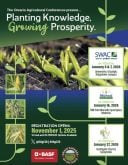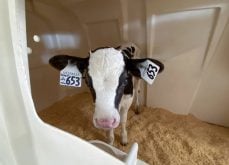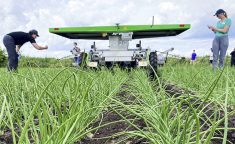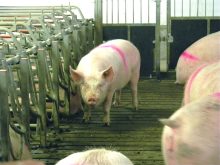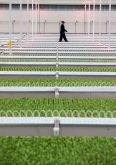A new poultry pilot project is putting biosecurity and disease mitigation measures in Ontario to the test.
Farm Health Guardian and the Feather Board Command Centre (FBCC) have partnered to conduct the project in the Niagara region.
“We are trying to assess whether digital biosecurity software is a useful tool in disease management,” says Dr. Tom Baker, project manager/incident commander with FBCC.
Read Also

Canada seventh-most influential country on agri-food
Report from Dalhousie University and MNP shows Canada ranks seventh among G20 countries on agri-food influence.
Why it matters: Being able to trace service vehicle movement on poultry farms quickly will help poultry farms manage disease risk better and more effectively.
Poultry farmers participating in the program will have access to biosecurity management software, developed by Farm Health Guardian, to view vehicle data on their farm.
Vehicles from industry representatives (such as those from feed mills or hatcheries) are fitted with a tracking device. When crossing a farm property, a date and time stamp will be recorded when the vehicle enters and leaves the farm property. Using a mobile app, farmers can access information on all vehicles entering or leaving their property.
All information is collected in real-time in a confidential database for the purpose of reducing disease spread.
“The idea is to really strengthen biosecurity,” says Rob Hannam, CEO of Farm Health Guardian. “Biosecurity is a strong way to reduce disease risk.”
Part of this is knowing who is coming on and off farm properties. Many producers are surprised to see, when looking at the numbers, there is more traffic on-farm than they realized.
“Most people are fairly amazed at how much vehicular traffic is on their farm. It helps them to look at opportunities to strengthen their biosecurity,” says Baker.
The two main points of information with this project is to better understand which vehicles, and individuals, have been on a farm property, and making that information available.
The second piece is to expedite communication within the industry if a disease risk is present, and being able to send messages to a list of specific people or farms quickly if they are at risk.
“There’s several different ways that the FBCC will be able to analyze and determine those lists,” says Hannam.
“A common complaint we have heard from producers is if there has been a disease outbreak in their township, they’re never quite sure who it is, and if it’s nearby or not,” says Hannam.
They want to know, “Did one of the trucks come to my place? Were they at that place previously?” he says.
Industry members are hoping the pilot project will help to better communication among farmers, and among veterinarians that are assessing the situation.
If the project is successful, there are many other features that can be added.
Truck fleets already have a GPS system, and this can be directed to the system, giving veterinarians instant access to vehicles in real time. As well, a tablet can be used to replace visitor logbooks.
“Our Farm Health Guardian kiosk becomes a digital way to enter that movement or that entry into the barn,” says Hannam.
Although the poultry industry has developed high biosecurity standards, it’s not realistic to expect compliance each and every day.
“I don’t think any country in the world, or any farmer, is immune from possibility of a breach in biosecurity,” says Baker. “When that happens, there’s a chance, if there’s virus in the environment, it could result in [the virus] getting into the barn.”
The pilot simulation is going to add to the biosecurity standards already in place.
“What excites me most about this project is the ability to combine different groups, different companies and different poultry commodities. The data can all be combined, while still being confidential,” says Hannam.
“We’ve been able to structure it so that the information that’s gathered would be held confidentially unless there’s a disease outbreak and the person is authorized. There’s a way to integrate the data if it’s needed for disease investigation.”
“What excites me is the ability, the potential, at least, to be able to stop any contagious disease, that we’ll be able to get it more quickly under control,” says Baker.
“We’re all in this together and this is a tool that may really be able to help us respond in a collective way.”
The Niagara region was strategically selected for the pilot project due to the concentration of poultry farms and large number of service providers that are active in the area.
The Farm Health Guardian and FBCC disease pilot outbreak simulation is open to all poultry farmers in the Niagara Region and is still accepting participants. Interested poultry farmers or those wanting to learn more can email [email protected].
“There’s lots of potential for the future of technology and we’re excited to have this simple, short pilot to demonstrate the basic values. We’re looking forward to getting a few more farmers involved in the disease simulation later this spring, and reviewing the results,” says Hannam.






